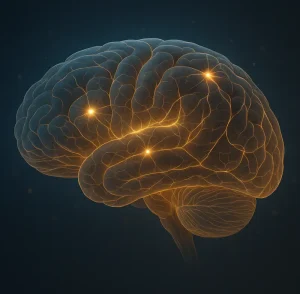The conversation around mental health has evolved dramatically in recent years. Once limited to treating disorders, it now embraces a broader, more human-centered understanding: mental wellness. In 2025, the world is recognizing that true well-being is not only about the absence of illness but about the presence of purpose, resilience, and balance. Mental wellness represents this new frontier a proactive, holistic way of nurturing the mind that integrates science, lifestyle, and social connection.
A New Era of Mental Wellness
As global awareness grows, so does the understanding that our mental state is shaped not only by biology but also by the environment, technology, and culture we live in. The pandemic years redefined how we perceive emotional health people are now more open about anxiety, burnout, and the need for self-care. This shift has led to an explosion in wellness practices: mindfulness, journaling, therapy apps, digital detox routines, and community programs focused on emotional resilience.
Mental wellness has moved beyond hospitals and clinics into workplaces, homes, and schools. It is no longer reactive; it’s preventive and empowering.
What Mental Wellness Truly Means in 2025
Mental wellness can be described as the ongoing process of developing emotional balance, self-awareness, and purpose in life. It’s the ability to adapt to challenges while maintaining harmony between thoughts, emotions, and actions.
Rather than focusing on ‘what’s wrong,’ mental wellness asks, ‘What helps you thrive?’ This shift in question reframes well-being from a clinical to a creative pursuit one that integrates psychology, neuroscience, and everyday human experience.
The Science Behind a Flourishing Mind
Neuroscience has shown that the brain remains flexible throughout life. Through consistent positive habits such as gratitude, meditation, exercise, and learning we can strengthen neural pathways linked to emotional regulation and resilience.
Positive psychology researchers describe this as the science of flourishing: the state of living with meaning, engagement, and accomplishment. Resilience, in particular, acts as a psychological muscle that grows stronger when exercised through small daily challenges and reflections.
In essence, mental wellness is a skill. The more we practice it, the more naturally it becomes a way of being.

The Four Dimensions of a Well Mind
True wellness comes from nurturing different dimensions of mental and emotional health. Based on leading global frameworks, these can be simplified into four key areas:
Movement and Expression Physical activity, art, and creativity are essential for emotional release and mental clarity.
Growth and Nourishment Lifelong learning, reading, and healthy nutrition feed both mind and body.
Rest and Rejuvenation Sleep, mindfulness, and solitude reset our cognitive systems and emotional balance.
Connection and Purpose Relationships and belonging are fundamental to meaning and joy.
Balancing these dimensions creates an inner ecosystem where the mind can flourish, adapt, and grow.
Mental Wellness in Daily Life
Building mental wellness doesn’t require dramatic lifestyle changes. It begins with micro-habits small, consistent actions that train your brain for balance.
Here are practical ways to embed mental wellness into daily routines:
1. Start mornings with stillness a short meditation or breathing exercise.
2. Move every day even a 10-minute walk releases endorphins and clears mental fog.
3. Keep a gratitude journal write down three positive moments daily.
4. Limit digital noise create tech-free zones to protect attention span.
5. End the day reflectively unwind with reading, prayer, or quiet reflection.
These habits work like compounding interest for the mind: small efforts, repeated over time, lead to profound transformation.
The Role of Society and Technology
Mental wellness is not an individual journey alone it thrives in supportive communities and balanced digital environments. In 2025, technology plays a dual role. On one hand, it fuels information overload and isolation. On the other, it offers new tools for healing mindfulness apps, virtual therapy, and AI-driven emotional support systems.
Societies that invest in mental wellness education, equitable access to care, and healthy digital policies are laying the groundwork for resilient populations. Workplaces are especially influential: when employees feel psychologically safe, creativity and productivity rise. Forward-thinking companies now treat wellness as a metric of success, not a side benefit.
Building the Future of Wellness
The future of mental wellness lies in integration blending scientific knowledge with human connection. Governments, educators, healthcare providers, and tech innovators must work together to create systems that value mental well-being as much as physical health.
Education systems can teach emotional intelligence alongside academics. Public health campaigns can normalize self-care and reduce stigma. Corporates can invest in emotional literacy, resilience training, and compassionate leadership.
At the same time, individuals must reclaim agency choosing habits and environments that nurture calm, creativity, and connection. This is how collective wellness begins: from the inside out.

Conclusion Wellness as a Shared Human Journey
Mental wellness is no longer a luxury; it is a necessity for thriving in a fast-changing world. It calls for both inner awareness and external support a synergy between personal responsibility and social compassion.
Every mindful breath, every act of kindness, every moment of learning contributes to a healthier collective mind. When individuals flourish, communities flourish. And when societies value wellness, humanity advances.
The future of mental wellness is already unfolding in every home, workplace, and heart that chooses balance over burnout, connection over isolation, and growth over stagnation.







